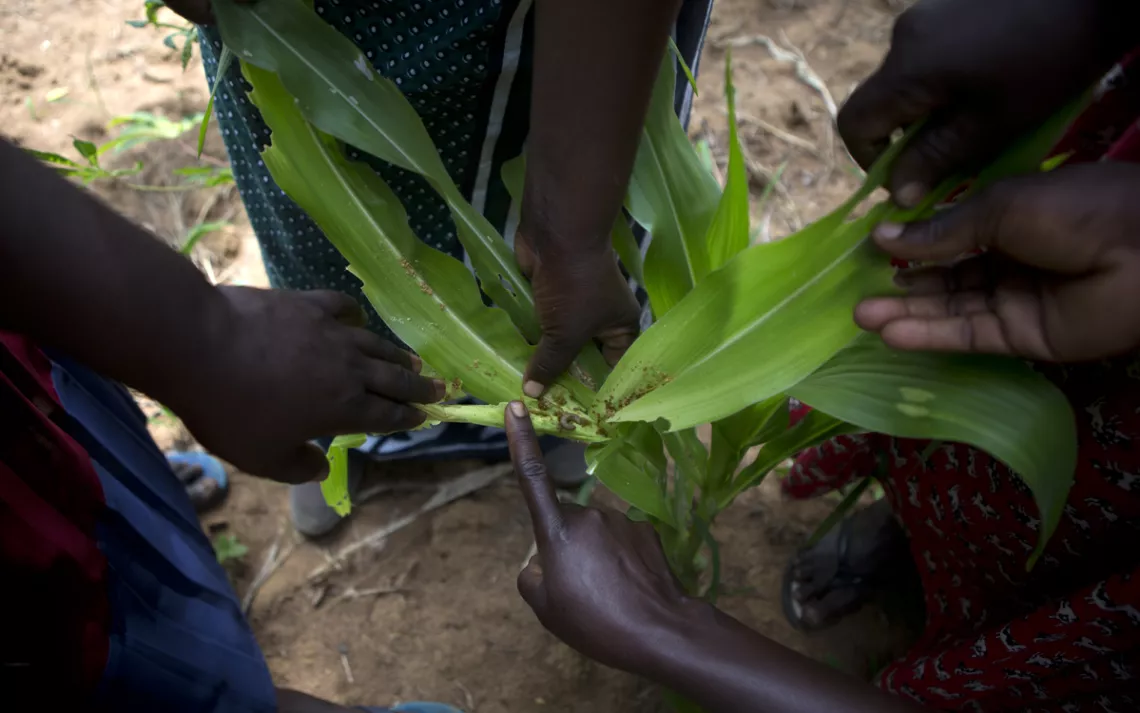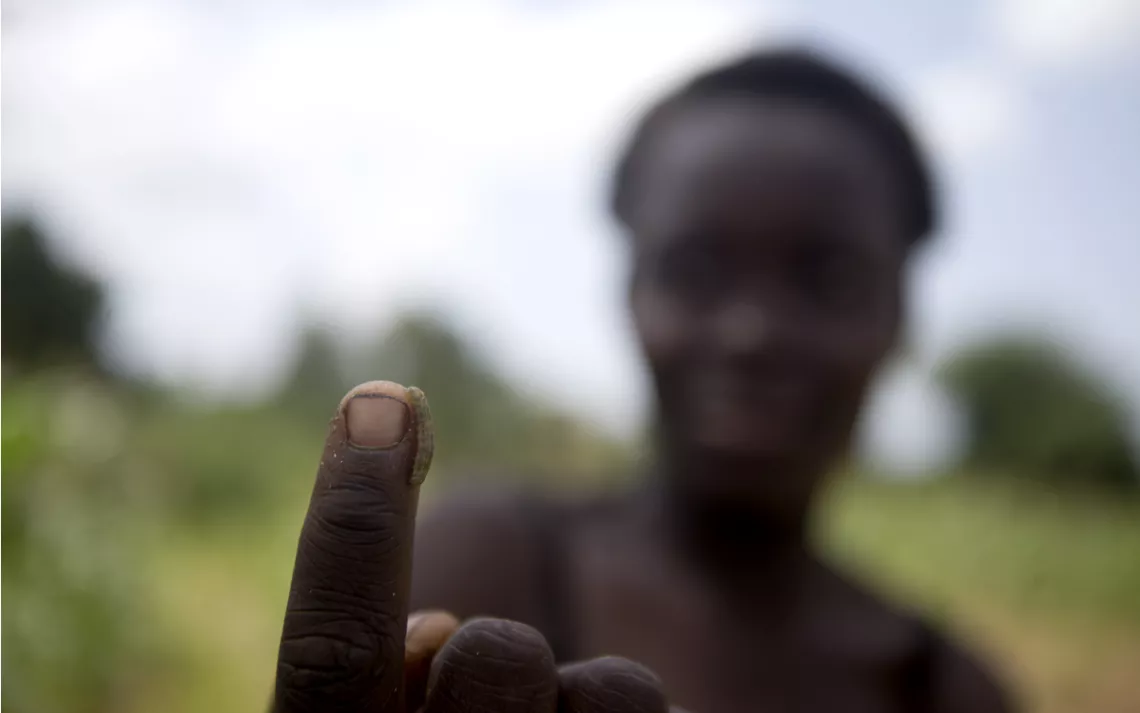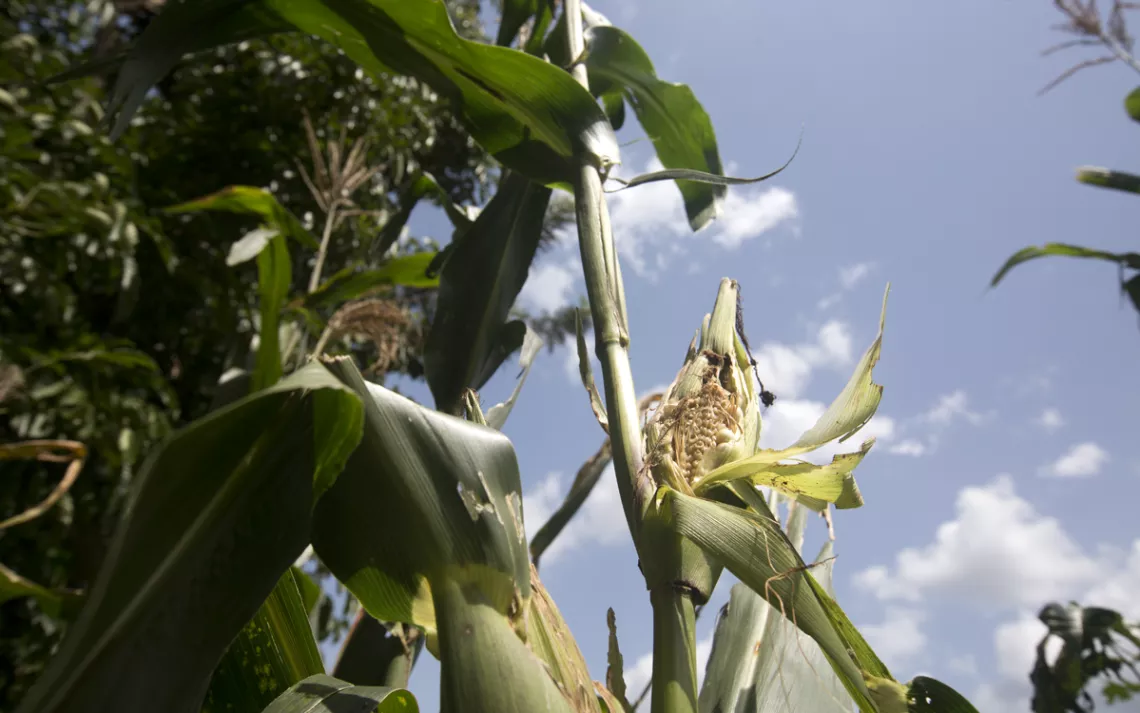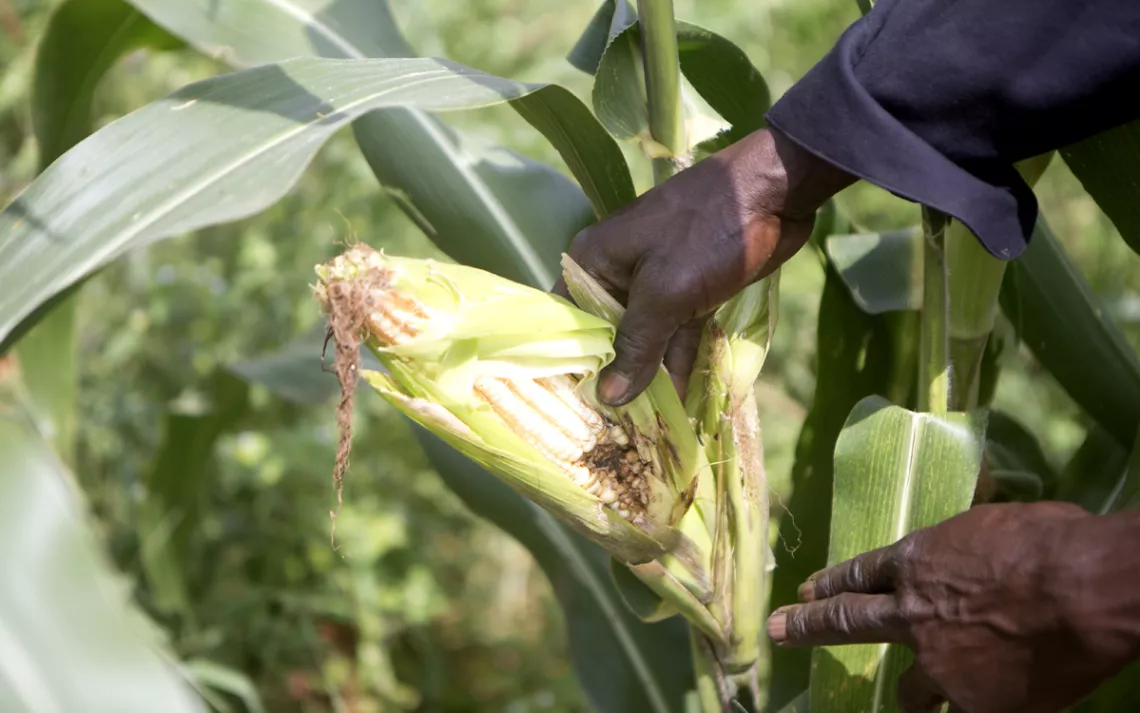Fall Armyworm Arrives in Africa on the Heels of Climate Change
A rapidly spreading invasive pest now threatens crops across the continent
Photos by Edward Echwalu
Tobias Okwara is a farmer in Kayoro Parish in southeastern Uganda. In the midst of a long drought that began in May 2016, he and his neighbors got together to discuss what to do. Food was becoming scarce, and they hoped to recover quickly once the rains started again. They decided they would pool their meagre resources and plant a large communal field of maize. By spring 2017, the rains had finally returned, and their maize was thriving.
Then the fall armyworm appeared seemingly out of nowhere. Larvae of the nondescript gray moths hatched and ate their way through the field of young corn.
Endemic to North and South America, the fall armyworm was first spotted in January 2016 in Nigeria. No one knows for certain how it arrived on the African continent, but since its initial appearance, the pest has spread to more than 28 countries, including South Africa, Burundi, Rwanda, Kenya, Ethiopia, the Democratic Republic of Congo, and most recently, Sudan and Mali. As it has spread, it has destroyed more than 740,000 acres of maize, the staple food for more than 200 million Africans.
The fall armyworm is closely related to the African armyworm, which is native to the continent. Both pests feed not just on corn, but also on other cereal crops like rice, sorghum, and wheat. Kenneth Wilson of Lancaster University has studied the African armyworm for 25 years and is now part of a working group with the United Nation’s Food and Agriculture Organization that is examining how to deal with the newly arrived pest.
Wilson says that while the African armyworm has long been a problem, it typically attacks one area and then moves on to another, making it only a sporadic threat to crop production in any given location. Not so with the fall armyworm. Once it has eaten its way through the cereal crops in a particular area, it sticks around to see what else it can eat. “If you’re a smallholder farmer who plants a little bit of maize, some sorghum, some beans, some tomatoes,” Wilson says, “all of those crops are potentially at risk from the fall armyworm.” It’s been known to feed on at least 80 plant species. In Uganda, over 40 percent of the crops are infested.
Uganda, like much of the rest of Africa, is already reeling from the effects of climate change.
Erratic weather patterns and intensifying cycles of drought and rain have taken a heavy toll on subsistence farmers like Okwara, who have no alternate food supply when it rains too much or too little and crops fail. The fall armyworm has come at a time when farmers throughout rural Africa are grappling with rising food insecurity because of climatic changes.
Global warming may also be a factor in the fall armyworm’s rapid spread across the continent. Wilson says that while it’s too early to know for sure about the new pest, 50-plus years of data on the native African armyworm shows that the population explodes after periods of drought. He thinks it’s possible that the intensifying droughts brought on by climate change may favor both varieties of armyworm.
In South America, where the fall armyworm has plagued crops for decades, farmers have used a combination of genetically modified crops and pesticides to keep it mostly in check. But this is an expensive and ecologically damaging approach that Wilson does not think is viable for the majority of farmers in Africa. For one thing, he says, “we know that resistance is developing already both to GM crops and pesticides.”
Wilson specializes in biological pesticides, which are developed from bacteria, baculoviruses, and fungi that naturally prey on pests. He has already identified a virus that kills the African armyworm, but to his frustration it doesn’t kill the fall armyworm. Wilson is currently testing a range of biopesticides to see if there are any commercially available products that could work as a short-term alternative to the chemical pesticides that African governments are relying on to address infestations.
As for the long term? Wilson points to parts of Central America, where the fall armyworm hasn’t been as big of a problem. “Farmers there say that it’s because they’ve got good integrated pest-management practices. They fertilize the soil with organic fertilizer, they painstakingly search their crops for eggs, and they’ve got mixed vegetation, like flowering plants that help to foster natural enemies.”
Such an effort will take time and significant outside investment. Fortunately, Wilson thinks countries outside of Africa are taking the threat seriously. It’s only a matter of time, he says, before the fall armyworm makes its way to Yemen and southern Europe. “For Europe and Asia, there should be an element of self-interest. It’s a global problem. It’s going to be everywhere.”
 The Magazine of The Sierra Club
The Magazine of The Sierra Club







